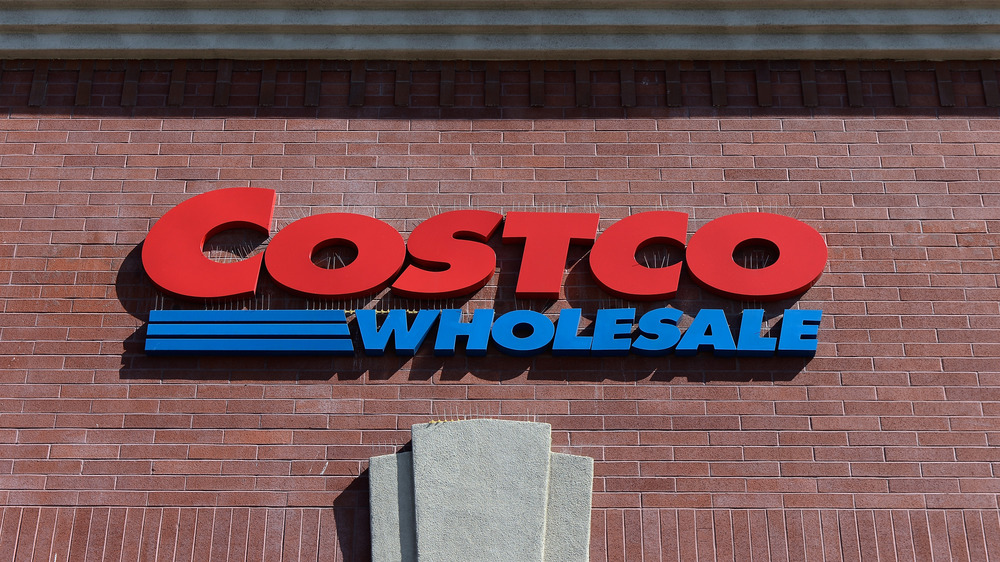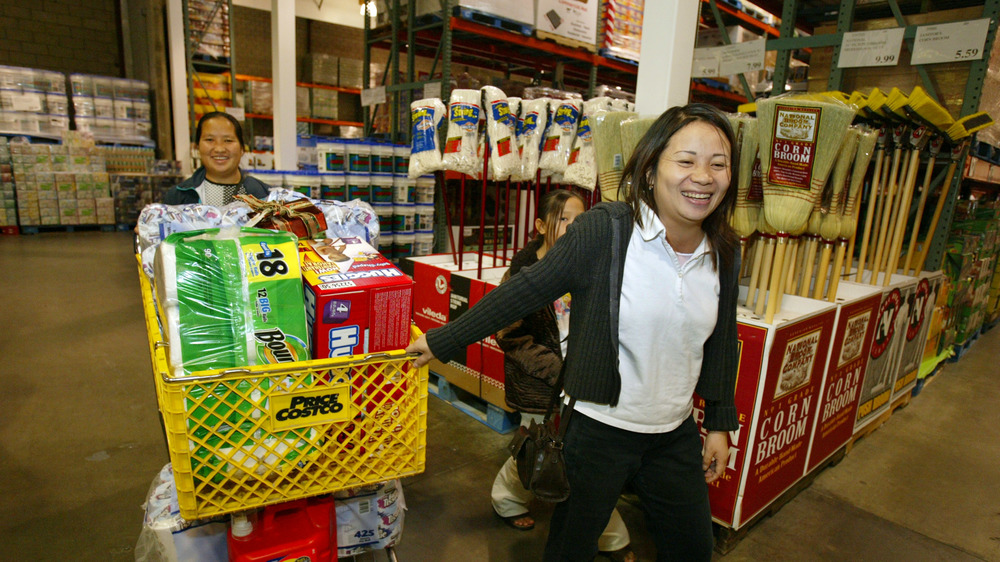Why Costco Prices Differ At Certain Locations
If you only visit one Costco warehouse religiously, you might assume you're getting the best price possible on certain household items. However, some dedicated Costco shoppers have noticed that not all items are priced equally across the different stores. While visiting different Costco locations, some customers have noticed occasional price discrepancies on certain products. The prices can vary from a few cents to whole dollars, which leaves shoppers wondering, what's going on?
As it turns out, it's often a calculated decision based on the prices set by other stores in the immediate area. A Costco worker, u/CostcoPanda, explained on a Reddit thread: "With meat and produce and other staples it's usually done to match/beat a promotion a competitor is running. Let's say oranges are normally $9.99. Turns out the Sam's Club down the street is running a promo on oranges ... They start selling them for $7.98 a bag. Costco sees this and decides we're going to match the promo (we just eat the loss on this) and sell for $7.99.This is only done when there is a strong competitor nearby."
This is confirmed by Costco Customer Service, who verified that "local competition might affect the price of that item." Available inventory and suppliers changing their item prices between shipments also contribute to the price variations between stores.
Stores will adjust their prices based on the local market
This practice isn't unique to Costco. Just about every major retailer will adjust their prices based on the local market. According to the St. Louis Post-Dispatch, major brands like Walgreens will sometimes vary their prices by up to 55 percent to contend with local competitors. Even between the distance of just a couple miles, rent, labor, and other business costs can significantly impact the pricing policy of individual stores.
"Our prices reflect the costs of doing business in the neighborhoods we serve as well as any nearby retail competition. Costs can vary from one location to another, even when they are a few blocks apart in dense urban areas, based on the store's cost of real estate, its hours of operation including whether it is open 24 hours, labor costs and the number of customers it serves each day, among other factors," a Walgreens spokesperson, Jim Graham explained to the St. Louis Post-Dispatch.
So while the prices may seem somewhat arbitrary, rest assured there is an economic explanation for the shifts between locations. And if you happen to live in an area with multiple locations of the same store, it's worth keeping an eye out to see where you can snag a few extra dollars of savings.

